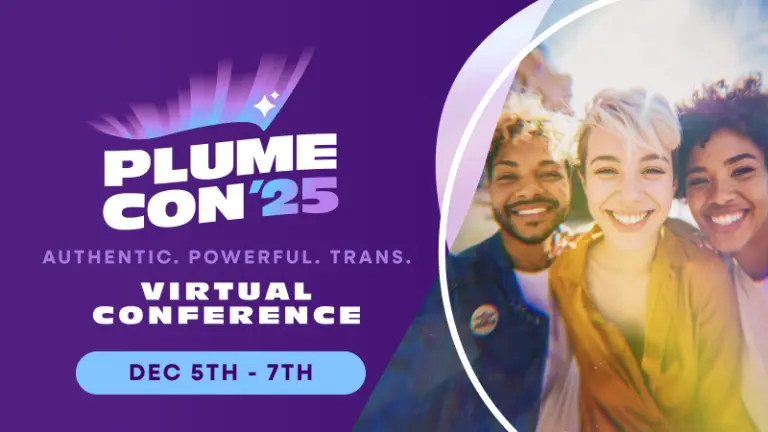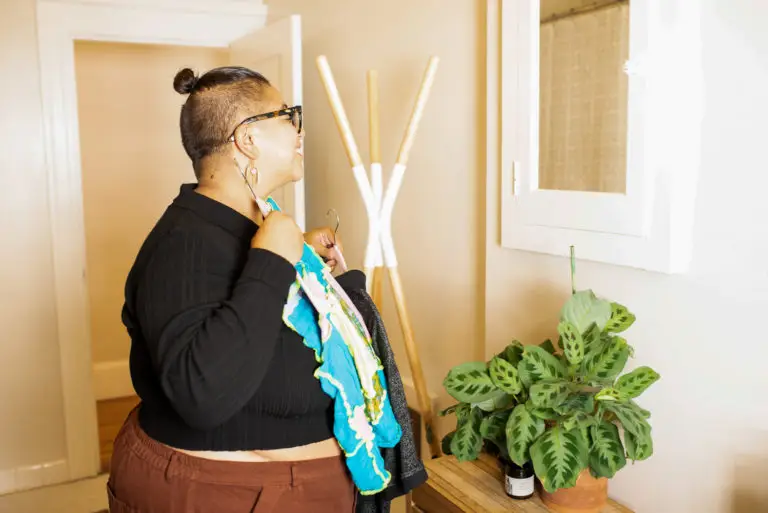By: Addie Tsai (any/all)
A place where we exist
I wasn’t born at a time where I knew the word non-binary existed, or its reality. Or trans, for that matter. I came of age in a suburb south of Houston in the 1980s and 1990s, just before the birth of the internet. As an identical twin (and as a child of a strict Asian father), I didn’t get to choose my own clothes, or to explore my own gender. I remain jealous of those who can look back at old family photos and see their true selves peeking out in the cowboy hat and pink boots, the baby bowtie and suspender pants.
Nonetheless, I knew there was something special about the fact that I was drawn to my father’s neckties, oxford shoes, and his marvelous brown leather briefcase, while, at the same time, I yearned to be a ballet dancer. I adored both Baryshnikov’s white tights and the crinoline and weighted ruffled skirts of my favorite classical ballets I watched when they happened to air on television.
I knew gay men existed because of my mother, and I thank her for introducing me to a wide range of adults who varied in gender identities in my sleepy conservative hometown that I wouldn’t know of otherwise. Of course, I knew about Ellen Degeneres, and I watched The Birdcage. We signed a petition in high school so that a girl who’d just moved to town could play football. We fought for these gay best friends to join the cheerleading team.
Looking back, I’m impressed at how my very dominantly cis, conservative suburb somehow knew what was right all along. The only two people in my high school that were visibly bi were also goths. Their black ensembles and spikes made the entire identity outside of the mainstream.
I say all this to say that it took a long time for me to uncover my genderfluidity, which existed outside of the binary. It took a long time for me to come to terms with my queerness, especially as an Asian twin child who was largely kept from within the confines of my own house. It didn’t help that I didn’t see any queer, trans, or non-binary people on screen, or in my life, that were Asian.
A lot of the Gen X community might groan about how much the world has changed, how the internet has stripped us from our mixtapes (which I still own and make, thank you very much) and our cordless landlines. But I’m grateful for the way the internet explosion connected me to a vast community beyond the confines of the four walls I first came of age within, who were as weird as me, and who would accept me no matter what gender I felt like when I woke up in the morning.
I finally came out to myself, and publicly, as a queer person in my late twenties, and I’m grateful for the queer friends I gained at that time who shared their coming out stories, their early crushes, the first time they knew they weren’t straight. They took me to the mall to buy my first flannel, and teased me about my predilection for ruffled shirts. They found the queer in me before I could recognize it. My former spouse was the one to encourage me to not be so afraid of wearing neckties and bow ties in front of my students, to bring my full self into the classroom. Once I realized that my students not only wouldn’t admonish me for my non-binary-ness but revel in it, I began to use my body and my life as a teaching tool, a kind of drag for the classroom that didn’t need to be explained.
I first started dressing this way at a community college in Houston, a city which, even as the most diverse city in the country, still maintains a fog of conservatism that makes it hard for young LGBTQIA+ students to find one another. But, straight or queer, trans or cis, I wanted my students to have a sense of the larger world beyond them, in just the way that I never did.
My visibility connects me to other loves, other family, but I also use clothing and style as a way to insist on my existence, to not allow myself to be erased or shamed for who I am. I found that my work to be more visible as a queer, nonbinary person did bring LGBTQIA+ students to me, students that I remain connected to still. I treasure it so much, and their visibility and connection inspires me just as much as I hope mine inspires them.
I’m thrilled and grateful to live in a world where media and representation is slowly waking up. We’re finally starting to see stories where nonbinary and trans people exist on screen, on Instagram, on TikTok, and finally, not all of them are white. I love getting to see all the dimensions of us, all the different ways we choose to make ourselves seen, how we blossom no matter what tries to silence us.
Addie Tsai (any/all) is a queer nonbinary artist and writer of color. They teach Creative Writing at the College of William & Mary. Addie teaches in Goddard College’s MFA Program in Interdisciplinary Arts and Regis University’s Mile High MFA Program in Creative Writing. They collaborated with Dominic Walsh Dance Theater on “Victor Frankenstein and Camille Claudel,” among other productions. She holds an MFA from Warren Wilson College and a Ph.D. in Dance from Texas Woman’s University. Addie is the author of the young adult novel, Dear Twin and Unwieldy Creatures, their queer nonbinary biracial Asian retelling of Frankenstein. Their writing has been published in Foglifter, VIDA Lit, Banango Street, The Offing, The Collagist, The Feminist Wire, Nat. Brut., and elsewhere. Addie is the Fiction co-Editor and Features & Reviews Editor at Anomaly, contributing staff writer at Spectrum South, and Founding Editor & Editor in Chief at just femme & dandy.
As the largest provider of gender-affirming care for the trans and nonbinary community, Plume is committed to providing information about many types of information, including questions about hormones like estrogen and testosterone, gender transitioning tips and experiences, and guidance on social transition and self care.
While we strive to include a diverse range of voices and expertise, not everything will be for every person. Each individual’s experience is unique, and the information Plume provides is not intended to be a substitute for professional medical advice, diagnosis, or treatment.
Always first seek the advice of your primary and/or specialist physician, the Plume Care Team, or other qualified health provider with any questions you may have regarding a medical condition, your mental health and emotional needs, or your health care needs regarding gender-affirming hormone therapy. If you are experiencing an emergency, including a mental health crisis, call 911 or reach out to Trans LifeLine.




